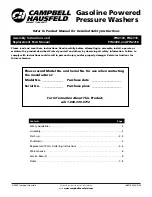
19
EN
Adding Detergents and
Softeners
Detergent Dosage
•
Detergent should be used according to the
instruction of the detergent manufacturer and
selected according to type, colour, soiling of the
fabric and the washing temperature.
•
If too many suds occur, reduce the detergent
amount.
•
If too much detergent is used, too many suds
can occur and this will result in poor washing
results or cause heavy load to the motor.
•
If you wish to use liquid detergent, follow
the guidelines provided by the detergent
manufacturer.
•
You can pour liquid detergent directly into the
main detergent drawer if you are starting the
wash cycle immediately.
•
Do not use liquid detergent if you are using
Delay End
function, or if you have selected
Pre Wash
option, as the liquid may harden.
•
Detergent usage may need to be adjusted for
water temperature, water hardness, size and
soil level of the load. For best results, avoid
oversudsing.
•
Refer to the label of the clothes, before choosing
the detergent and water temperature.
•
Use only suitable detergents for the respective
type of clothing:
−
Liquid detergent is often designed for special
applications, e.g. for coloured fabric, wool,
delicate or dark laundry.
−
Powdered detergent is suitable for all types
of fabric.
−
For better washing results of white and pale
garments, use powdered detergent with
bleach.
−
Detergent is flushed from the dispenser at the
beginning of the wash cycle.
NOTE
•
Do not let the detergent harden. Doing so may
lead to blockages, poor rinse performance or
odour.
•
Full load: According to manufacturer’s
recommendation.
•
Part load: ¾ of the normal amount
•
Minimum load: ½ of full load
Adding Detergent
•
Detergent for main wash
a
only
~
J
•
Detergent for pre wash
b
and main wash
a
~
d
#
J
NOTE
•
Use the appropriate amount of detergent. Too
much detergent, bleach or softener may cause
an overflow.
•
When selecting
Pre Wash
, divide the dosage
into ⅓ for pre wash and ⅔ for main wash.
















































